Porto Novo is the current capital of Benin. Despite having only 250,000 inhabitants and a much more relaxed atmosphere than Cotonou, it has always had an important weight in history. Today, it is a city that houses the main museums of the country such as the Ethnographic Museum where you can learn about the cultural history of Benin; or the Da Silva Museum, where you’ll learn about Brazilian influence with the return of the slaves who returned to Africa from the American continent; among others.
The origin of the name Porto Novo comes from the Portuguese influence (before this city was known as Hogbonou or Adjacé), who once they reached the coasts of the then kingdom of Dahomey, being aware of the great strength they had, decided to join them to get slaves from enemy tribal groups. Being close to the coast, the Portuguese who were the first to arrive decided to name it Port Nou. However, in Porto Novo we do not only find Portuguese influence. We also find Muslim roots with a large mosque in the form of a very curious basilica; the French influence on the various colonial houses and Christian churches; and, finally, the Brazilian influence of those who left Benin and when slavery was abolished, decided to return Brazil to its origins.
As in most of Benin, in Porto Novo it is also noted that Voodoo is an official religion. If you’re lucky, there you can find the Zangbetos, known as guardians of the night, and see some of their traditional dances that break with the calm that reigns in most of the city.
Outside the city of Porto Novo, we find the floating village of Aguegué, in the waters of Lake Nokoue. It is not as well known as Ganvié (if you want to read our experience click here), but it is also very impressive how its inhabitants have become accustomed to living on water. In addition, throughout the week, around Porto Novo there are several markets that, if you are lucky enough to coincide, are always very interesting to see, such as the Adjarra market, from where you can navigate the so-called Black River.
In Porto Novo there has been a mixture of fascinating cultures that have created a very interesting historical environment to live while walking through the quiet streets of this city, and enjoy the local people.
How to get there?
Porto Novo is one of the most important cities in southern Benin, so getting there is relatively easy. If you want to get there from Cotonou, you can take some of their shared taxis that leave from the Dantokpa market and drop you off at Porto Novo taxi station. The journey takes 1 hour and the price we paid in May 2022 was 800 CFA per person, or about € 1.20 in change. From Porto Novo station, you can walk quietly to the city center as it is not a very big city.
If you want to get to Porto Novo from Aguegué, which is the journey we made because we came from Ganvié, the motorcycle taxi ride is 300 CFA per motorcycle. It is only a few kilometers, but when we were loaded we decided to take a motorcycle.
Finally, if you come or want to go north from Porto Novo (for example, towards Abomey, Kétou or the area where we find the Fulani people and the Holi people -if you want to know more about these ethnical groups, click here-), you must take a taxi from the Ouando market area, which is next to the main RNIE1 road and from there take a transport or drive until you meet the RNIE4 which is the road that goes from Kétou to Abomey.
What to do in Porto Novo?
In the capital of the country, the main activities we highlight are:
– Visit the Grand Mosque of Porto Novo, an impressive building
Perhaps for us this is the most impressive building in the city. In Porto Novo, Muslim and Christian religions were mixed, as they were all welcomed by one of the kings of the city, King Toffa; And so it is not surprising to see that the Great Mosque has no minaret.
This mosque, one of the largest in West Africa, is designed in an Afro-Brazilian style, as it has been established in a church built by Afro-Brazilian slaves who returned to Porto Novo influenced by the vision of the Protestant churches of the Portuguese colonies. It was built between 1912 and 1925, and is currently not in very good condition.
It is a bulky building, as if it were a basilica of ancient Rome that houses the Muslim faithful who go to pray every day. Isn’t that funny?
– Discover some of the local markets in the area, such as the Adjarra market
Every day in some of the villages around Porto Novo, a market is held that brings together the different residents of the region in order to sell and buy, that is, do business.
A curious thing is that the market is not always held on the same day of the week, but the market day is calculated through the days that will be held. To explain us better, there is a market held every 3 days. Therefore, it does not fall every Monday but the day varies depending on the week. It may be very difficult to understand, but we attach this link that we found on the Internet where you can have all the details of the market days in Benin.
Adjarra is a town that is about 20 minutes by motorcycle from the center of Porto Novo. The journey cost us 400 CFA per motorcycle. There, we were lucky enough to see a more rural market. It didn’t have the magnitude of Dantokpa’s market (you can click here to find out more), but there was a lot of atmosphere, and there we were the only yovos (the name given to whites) on the market.
They highlighted the food stalls, but also animals, baskets and tam-tams, a very important musical instrument for voodoo culture (to know more about this religion you can click here). This Adjarra market was an explosion of colors and life!
– Navigate the Black River
If we stay in Adjarra for a while longer after visiting the market, we can walk to a river from where some canoes depart. This river is known as the Black River and there are different theories about its etymological origin. Some say that it is so called because of its dark color, since it is surrounded by palm trees and tall trees that create this atmosphere; Others say it’s because the water is very clear and therefore you can see its soil a blacker color. This river is considered sacred by many cultures because many ethnic groups took refuge there from the armed conflicts of the area, and also by the Voodoo religion.
We could not go since there was no canoe that could take us to sail this river, but it is a good experience to do if you have time and if you want to discover rural villages by the river where you can learn about their culture and try their local drinks.
– Visit the floating village of Aguegué
Aguegué is one of the other floating villages on Lake Nokoue (such as the well-known village of Ganvié) that lies adjacent to Porto Novo. Much smaller than the Venice of Africa, many people take the boat to go to Cotonou or villages located on the shore of the lake.
We got there through Ganvié, on a long journey we made in a private canoe paying 25,000 CFA. When you arrive in Aguegué you can see the houseboats on the water and how people have become accustomed to living in such an environment. Many work in fishing but, unfortunately, due to biological and environmental problems, their conservation is unknown.
– Visit the different museums in the city, such as the ethnographic museum or the da Silva museum
Porto Novo is the city par excellence of museums in Benin. There, we can find different museums that keep the history of various cultures that have left their mark on the city. Some of the museums we highlight are:
1.- The da Silva Museum, which is housed in a historic building, displays the history of African slaves who were sent to Brazil and decided to return to their origins once the practice of slavery was abolished.
2.- The ethnographic museum, probably the most important museum in the city. When we went there it was under construction and we could not access its interior, but they say that inside is the roots of African culture; with explanations of the different tribal groups, exhibition of objects and an extensive collection of masks of the traditional dances that are performed in this area, such as Gelede (if you want to know more, you can click here).
3.- In the museum of the Royal Palace you can find the collection of different Yoruba kings who ruled Porto Novo. On the other hand, in Abomey you will find the royal palaces of the Fon kings, declared a UNESCO World Heritage Site (you can find out more by clicking here). We decided to visit these last palaces in Abomey.
The cultural mix that Porto Novo has experienced throughout history has made this city today a reference for museum lovers.
– If you’re lucky, attend a traditional celebration
In Porto Novo, as in much of Benin, voodoo is mostly believed. So, it is not surprising that during your visit to the city you coincide with a voodoo festival such as, for example, the dance of the Zangbeto, the guardians of the night.
Finding these traditions sometimes means being very lucky. We were told that Friday and Saturday were a good day to find some night guardians making sure there are no problems with the community. These celebrations are part of the culture of the country, and a gift for those lucky enough who can experience it. We, in Porto Novo, were not so lucky.
Where to sleep in Porto Novo?
Despite being the capital of the country, in Porto Novo we do not find a wide range of accommodation. We highlight:
– Centre Songhai: This accommodation, despite being far from the city center, stands out for being an agricultural training establishment where you can learn first-hand about its project. It has rooms with a fan and also air-conditioned with good value for money. It has a restaurant and is a good way to get into the local agriculture projects that are carried out in this area. For more information, you can click here.
– Casa Danza: This accommodation, which is located right in the same square as the National Assembly of Benin, has different types of rooms: the single room is priced at 6,000 CFA and the double room is worth 8,000 CFA. It has a restaurant and a small car park if necessary. Simple but conveniently located accommodation for exploring the city of Porto Novo. For more information, you can contact them through the following phone: +229 97 72 02 45.
Our route
We spent a night in Porto Novo after arriving from Ganvié, one of the country’s iconic towns. That day, we got up early to see the floating market of Ganvié that takes place during the early morning and until the early hours of dawn where fishermen buy something to eat for the long working day from the women who are on the canoes selling and singing everything they have to eat and also the different groceries they can offer. These women have kerosene lamps to illuminate their canoes, and this market lasts until the first hours. One of the most beautiful markets you can see in Benin.
After visiting this floating market, we returned to Ganvié’s lodging and from there, we took a motorized canoe that took us to the port of Aguegué, another floating village located on the other end of Lake Nokoué. The journey, about two hours, passed between a gentle breeze and a landscape with waterfowl and fishermen working with their nets. We were crossing one of the largest lakes in the country accompanied by the roar of the engine and moving in a single direction, to the east, where we reached the shore of another floating village, Aguegué.
From the canoe, we were able to observe local life in this other, smaller village. The younger children greeted us intensely and then quickly hid amid a mixture of shame and mischief; the elders worked in order to transport different goods; There was a community gathering at some house and canoe traffic intensified, a sign that we were approaching the deck of Aguegue. Once there, a crowd of people waited to get on the canoes that would take them to different parts of the lake and also to Cotonou; and others took advantage of the fact that there was a small market to hang out, while they watched us curiously as three white men descended from the canoe loaded with their backpacks and set foot on dry land.
Upon Aguegué deck, we decided to take some motorcycle taxis to take us to the National Assembly, one of the most important presidential places in the country and located in Porto Novo. There, there were several lodgings, so we could look for a place to sleep and unload, our first mission upon arriving in Porto Novo. After crossing some of the widest roads we had seen so far in Benin (although they were under construction) and starting to suffer a heat that was increasingly suffocating, we arrived at the accommodation where Uahad received us and were able to leave our bags. There was hardly anyone there, but the rooms were good enough considering the value for money.
It was still early to go to lunch, for we had risen that day before the sun rose; So we went for a walk around the square and through some gardens where we took the opportunity to eat some good dishes of spaghetti that were made to wait because we were the only diners in that place that seemed to have lived better times before the pandemic.
In the afternoon, we took the opportunity to go and discover the city of Porto Novo. We were able to walk through its wide streets, and visit one of its most emblematic buildings: the Grande Mosque, a building in decline that is very special because it is shaped like a basilica but inside we find a mosque. Afterwards, we walked through the city discovering small places where voodoo is very important, such as a place where women who have their periods cannot enter because it is considered impure and which are sacred places for the voodoo religion. Also, we were able to see different museums, with the bad fortune that many of them were under construction and therefore, closed to the public.
Porto Novo is a city you can explore in an afternoon, so in the evening we returned to the accommodation and had dinner at their restaurant and a few beers, before going to bed. The next day, before returning to Cotonou, we would visit one of the iconic markets of Porto Novo, the Adjarra market. This market takes place every 3 days, and it happened that the next day in this small town located on the outskirts of the city there was a market. In Africa, when there is a market it means that there is a lot of life around and, for us, it was always a very interesting experience to live.
The next day, after getting up and leaving our backpacks at reception, we took some motorcycles and after about 30 minutes we were in one of the main markets in the region, which was characterized by the presence of many different types of product: live animals, baskets, tam-tams, fruit, ceramics… In these African markets, you can find everything!
It was noticeable that it was one of the most important markets in the region because it was crowded. Already the arrival by motorcycle was an adventure, between horns and passing next to loaded cars and people who went up and down. Then, at the time of walking, three-quarters the same. A crowd of people, stops by the side of the road and different sectors of street shops that crowded among the houses in the center of Adjarra.
We entered a tam-tam shop, a percussion instrument very transcendent to African life and voodoo religion, and walked among stalls selling baskets, animals, vegetables, fabrics, clothes… and everything you can imagine. Then we left the market and headed for the banks of the Black River, a sacred and mysterious river in Benin. Along the way, we came across a lot of children leaving the school that was located near the shore…
After making a mistake on the way and ending up in an area where some handsome and forced African men were showering, we went back until we reached the bank of the Black River where you could supposedly negotiate with some canoes to take you for a walk through the meanders of this special river. Unfortunately, there was no one there so we headed back to the center of town.
On the way, we met some teachers and workers who were already leaving school and we were talking with them. They were curious about what we were doing there, we laughed for a while and took some pictures and told us what they were doing at school. In Africa, time exists, and people give you their time, and that’s very much to be appreciated coming from the societies where we come from.
Finally, after walking with them to the center of town and seeing that the market was still equally saturated with people, vehicles and stalls; We took a motorcycle to our accommodation in Porto Novo, from where we would take our belongings to walk to the station and take a shared taxi that took us to another market: the Dantokpa market, in Cotonou.




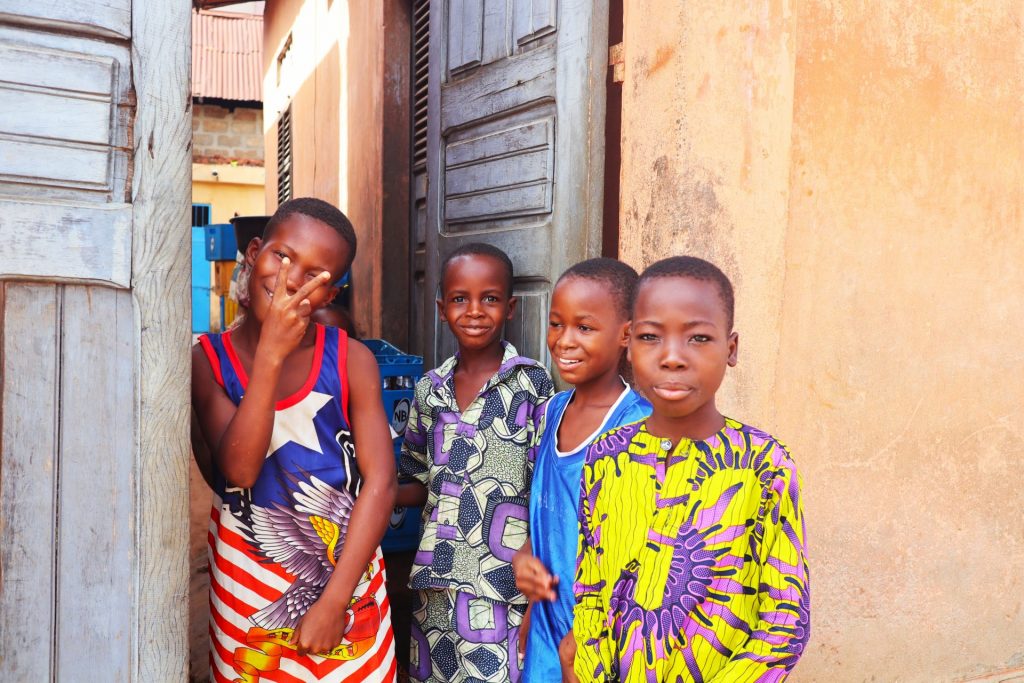
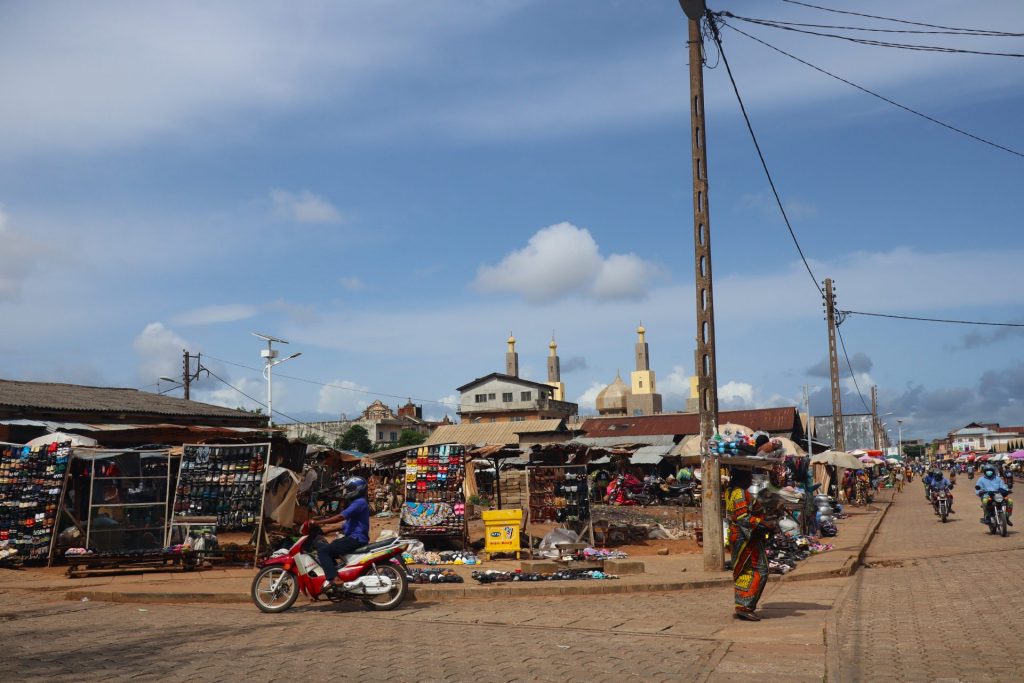


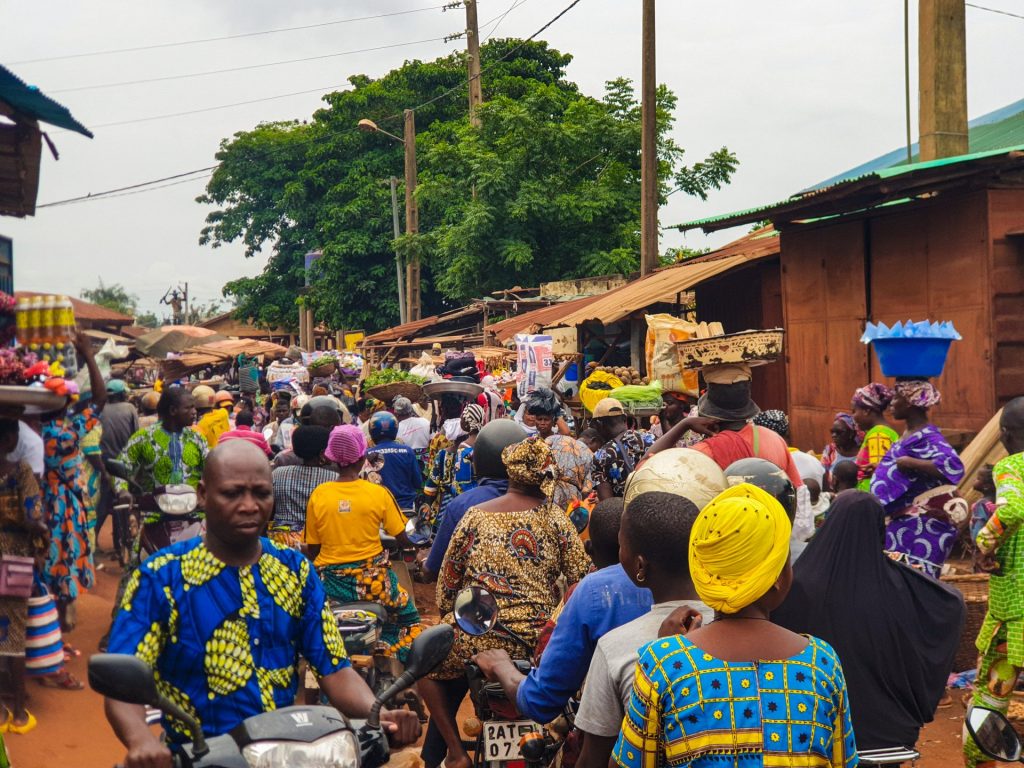




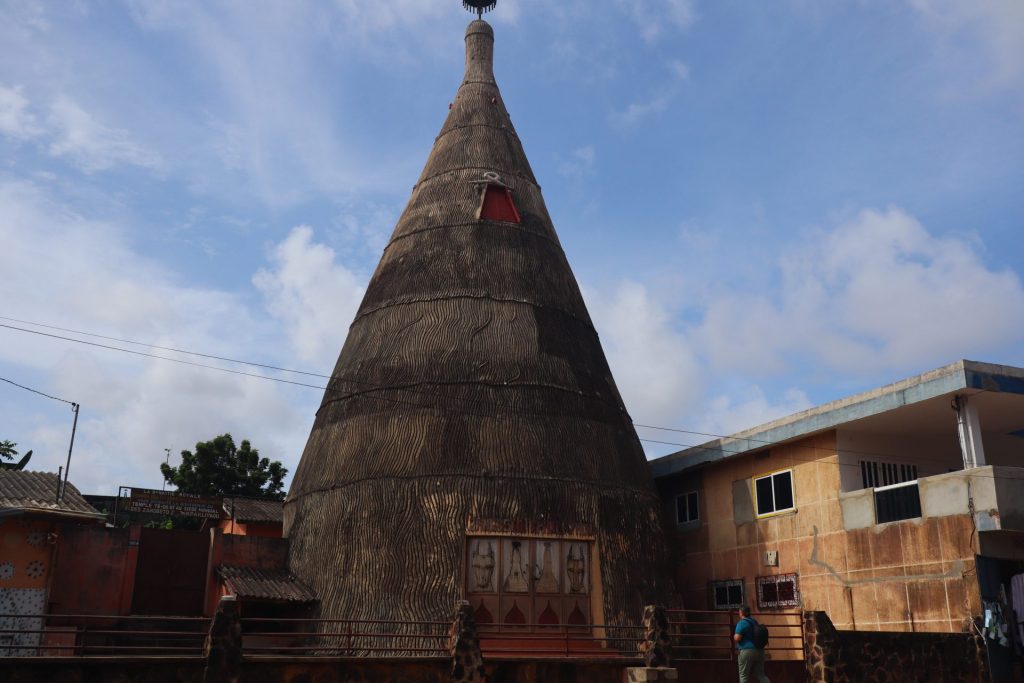
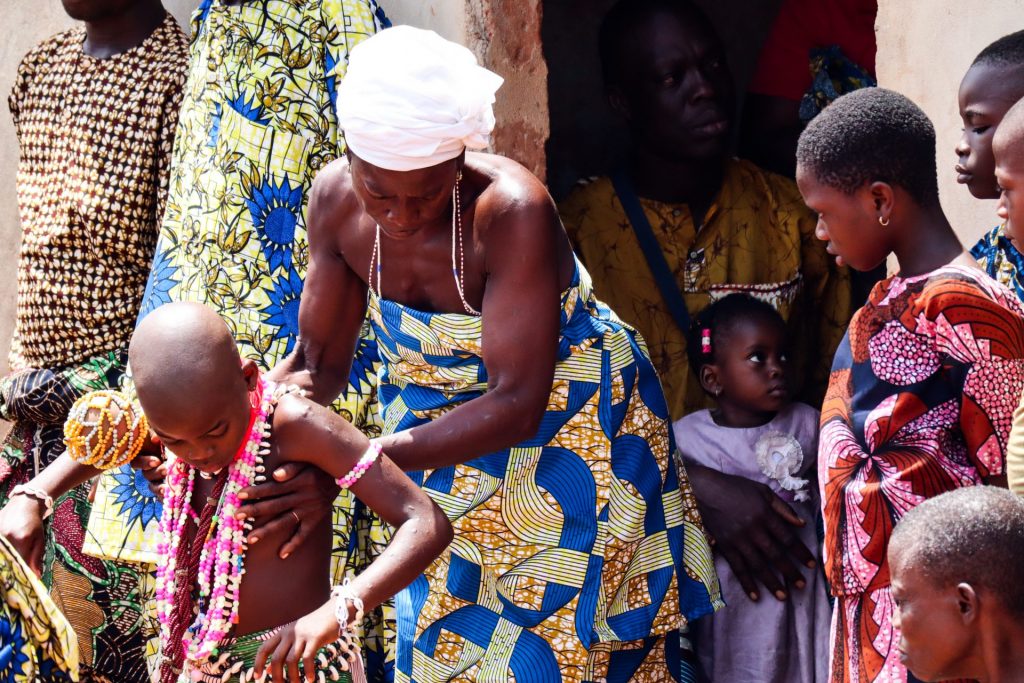
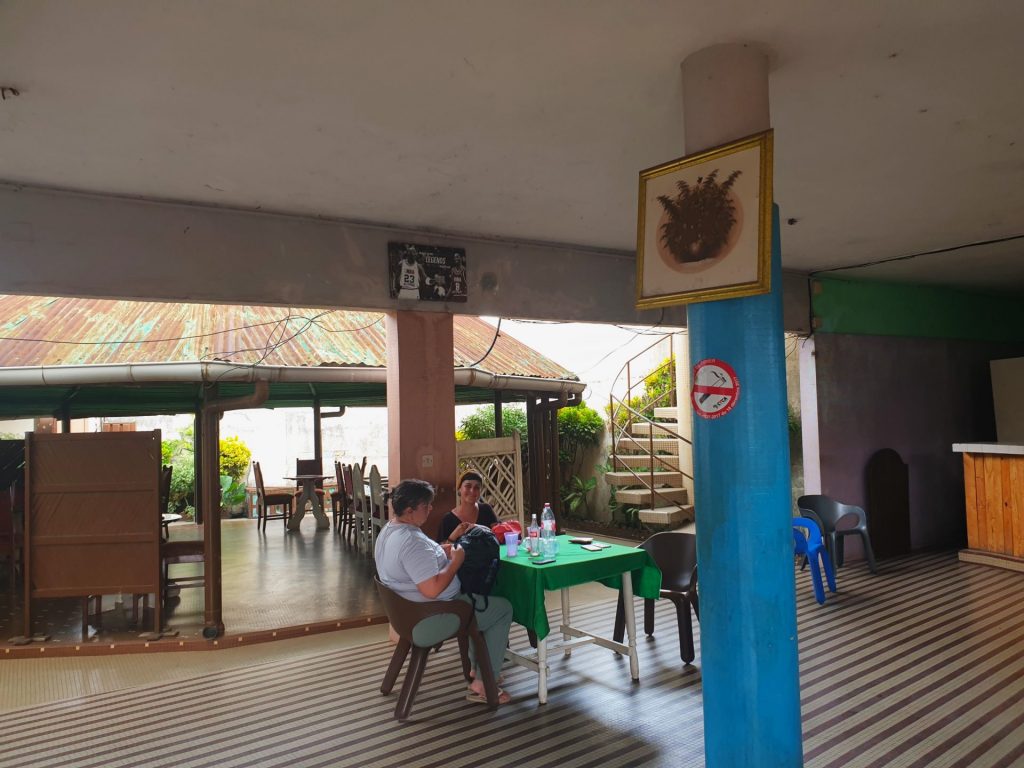
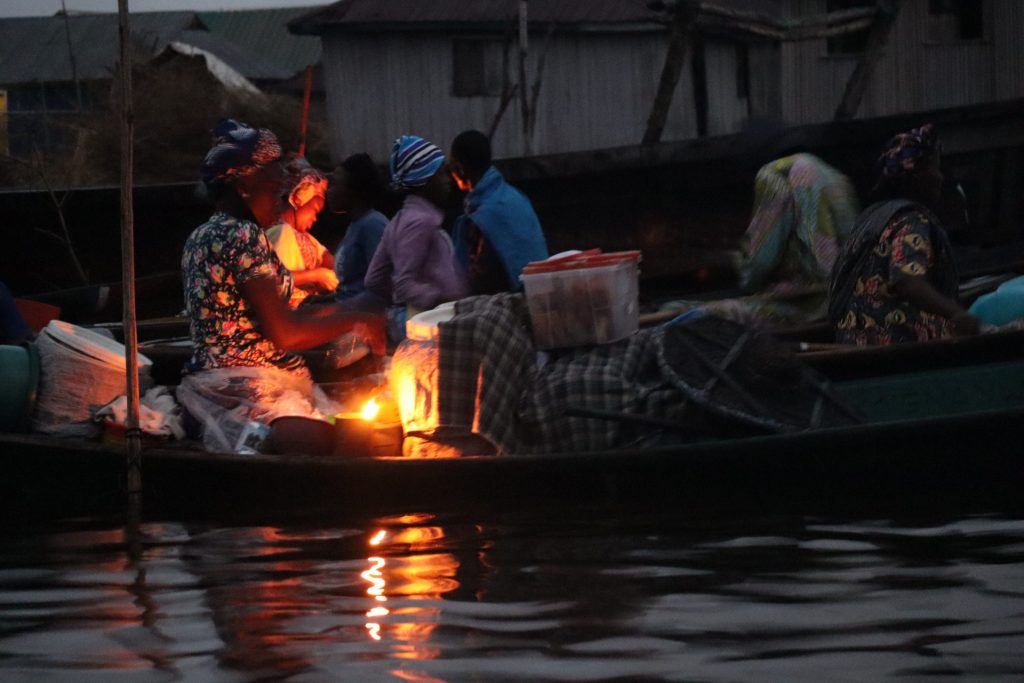
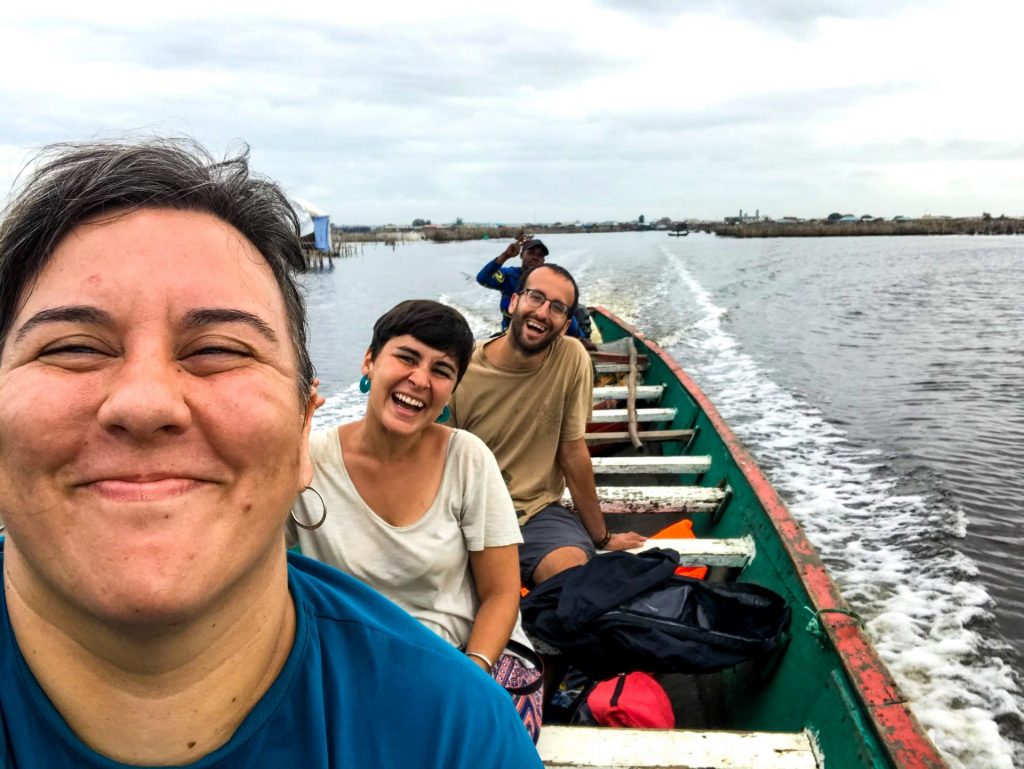



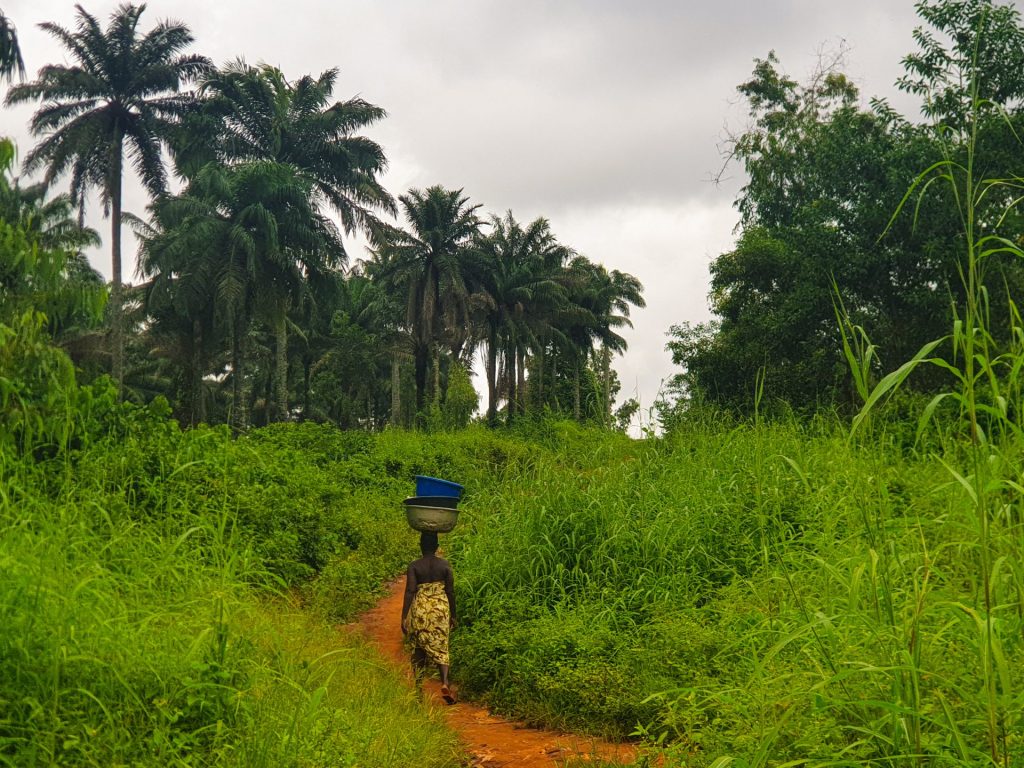
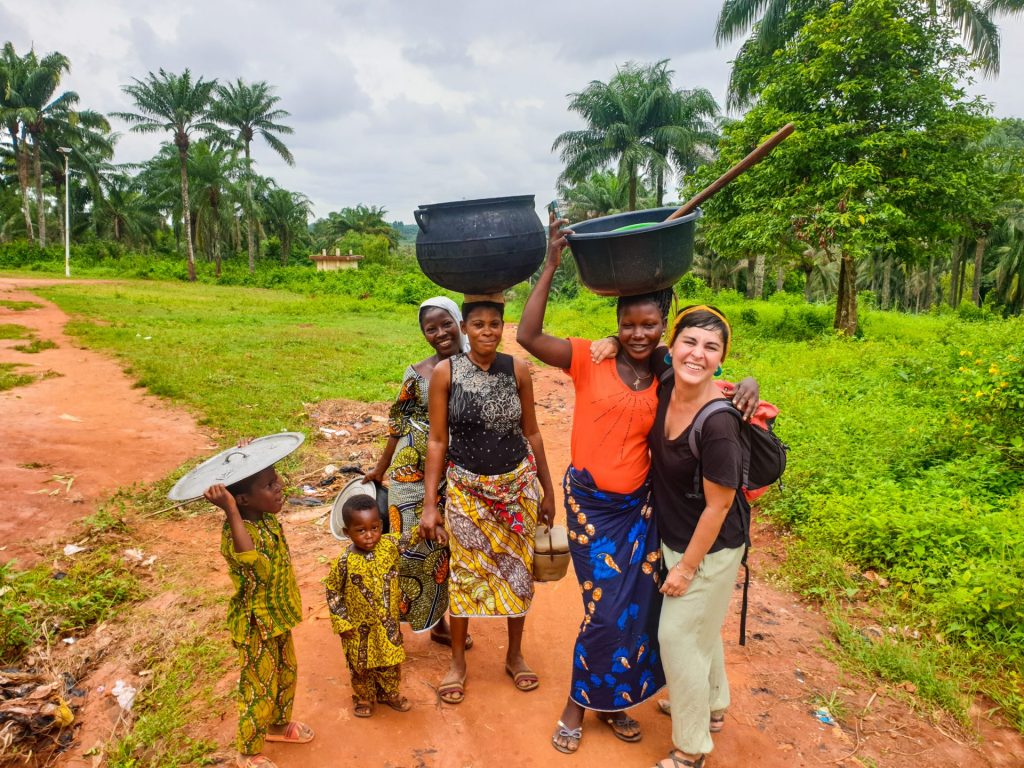
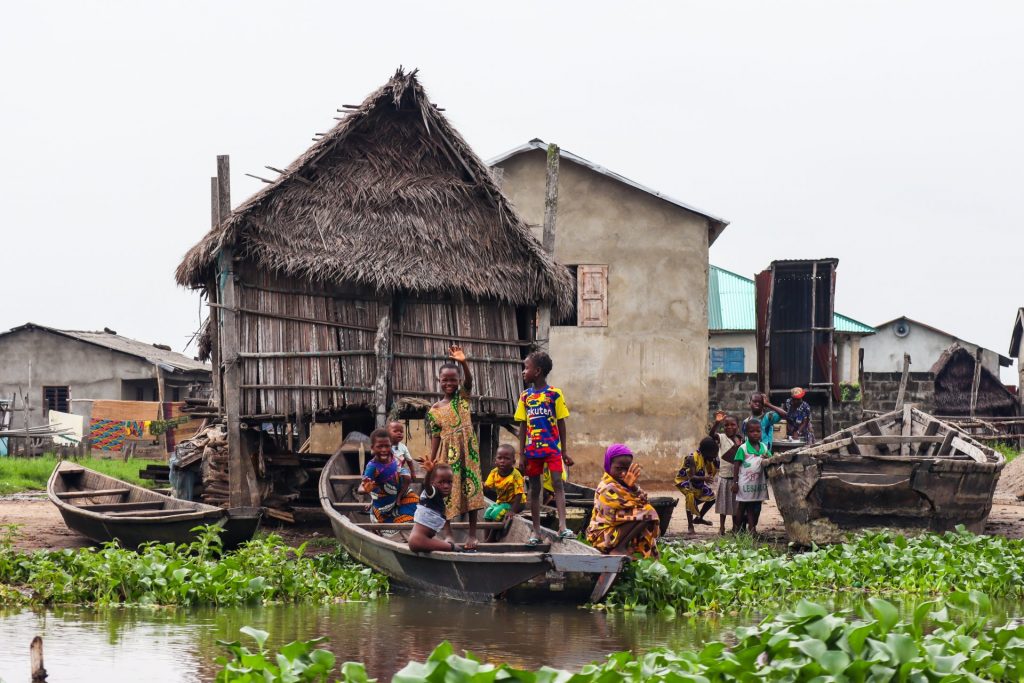


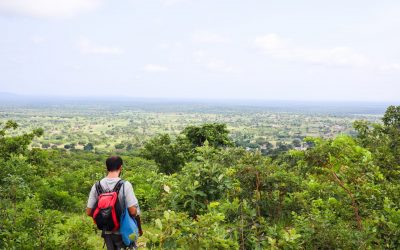

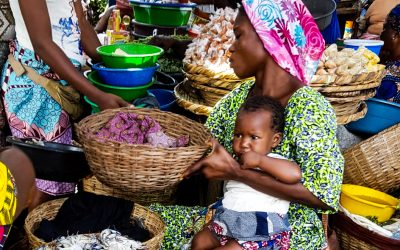
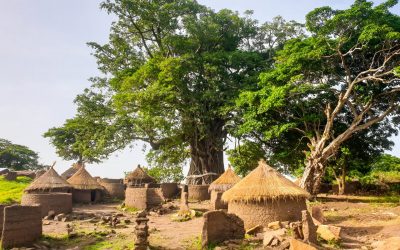

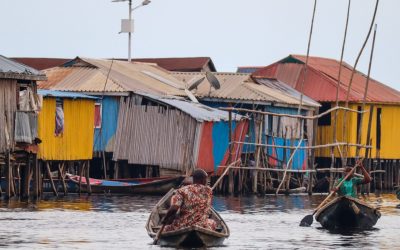
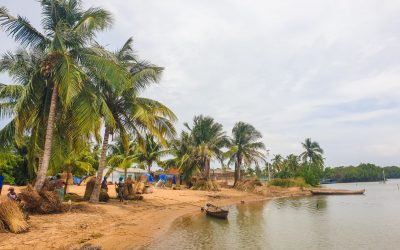
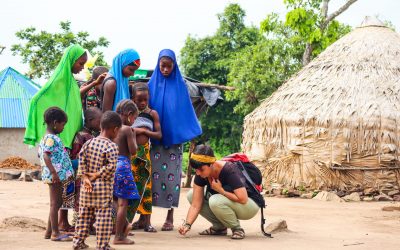
0 Comments